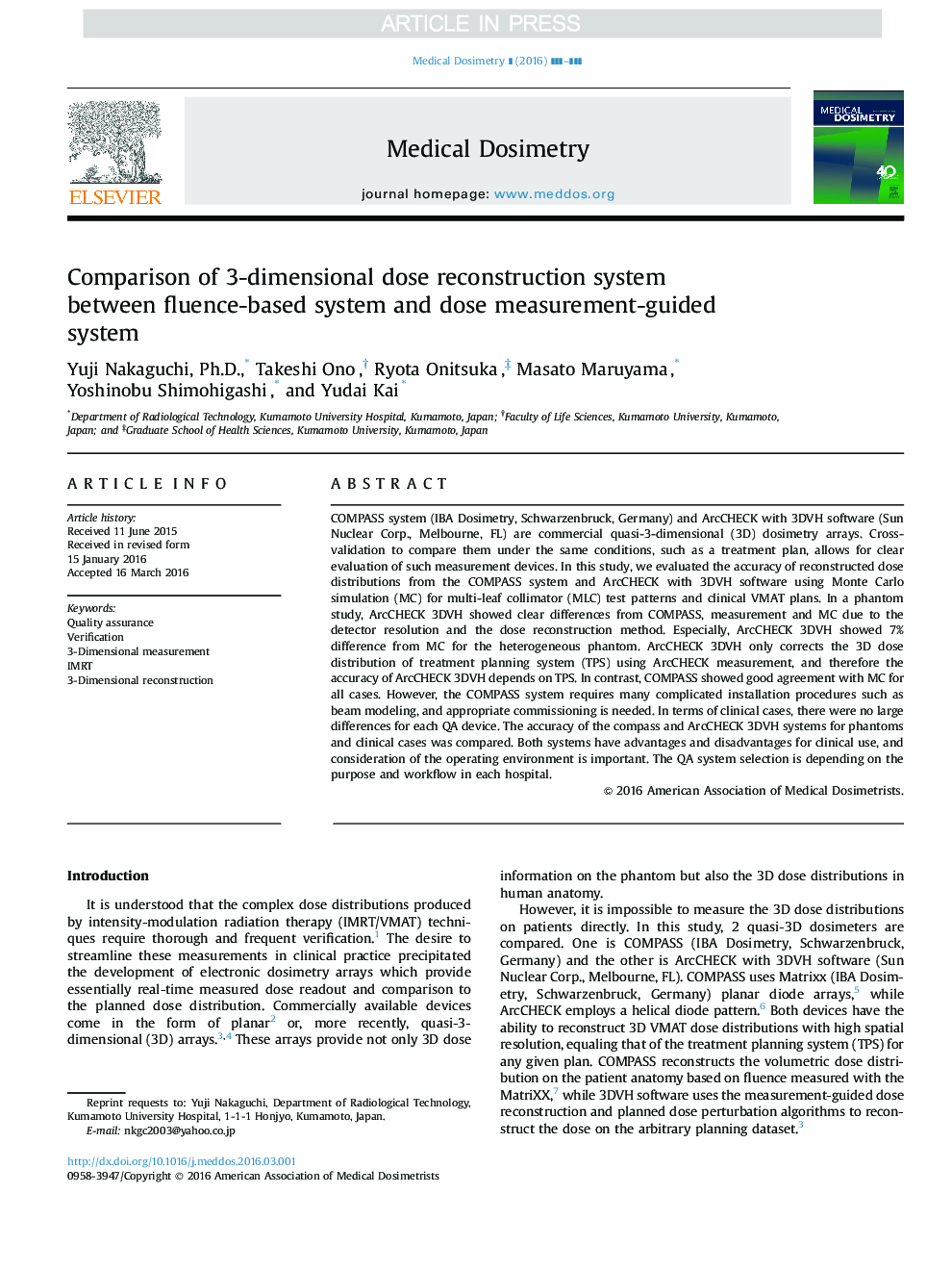| Article ID | Journal | Published Year | Pages | File Type |
|---|---|---|---|---|
| 1880844 | Medical Dosimetry | 2016 | 7 Pages |
Abstract
COMPASS system (IBA Dosimetry, Schwarzenbruck, Germany) and ArcCHECK with 3DVH software (Sun Nuclear Corp., Melbourne, FL) are commercial quasi-3-dimensional (3D) dosimetry arrays. Cross-validation to compare them under the same conditions, such as a treatment plan, allows for clear evaluation of such measurement devices. In this study, we evaluated the accuracy of reconstructed dose distributions from the COMPASS system and ArcCHECK with 3DVH software using Monte Carlo simulation (MC) for multi-leaf collimator (MLC) test patterns and clinical VMAT plans. In a phantom study, ArcCHECK 3DVH showed clear differences from COMPASS, measurement and MC due to the detector resolution and the dose reconstruction method. Especially, ArcCHECK 3DVH showed 7% difference from MC for the heterogeneous phantom. ArcCHECK 3DVH only corrects the 3D dose distribution of treatment planning system (TPS) using ArcCHECK measurement, and therefore the accuracy of ArcCHECK 3DVH depends on TPS. In contrast, COMPASS showed good agreement with MC for all cases. However, the COMPASS system requires many complicated installation procedures such as beam modeling, and appropriate commissioning is needed. In terms of clinical cases, there were no large differences for each QA device. The accuracy of the compass and ArcCHECK 3DVH systems for phantoms and clinical cases was compared. Both systems have advantages and disadvantages for clinical use, and consideration of the operating environment is important. The QA system selection is depending on the purpose and workflow in each hospital.
Related Topics
Physical Sciences and Engineering
Physics and Astronomy
Radiation
Authors
Yuji Ph.D., Takeshi Ono, Ryota Onitsuka, Masato Maruyama, Yoshinobu Shimohigashi, Yudai Kai,
